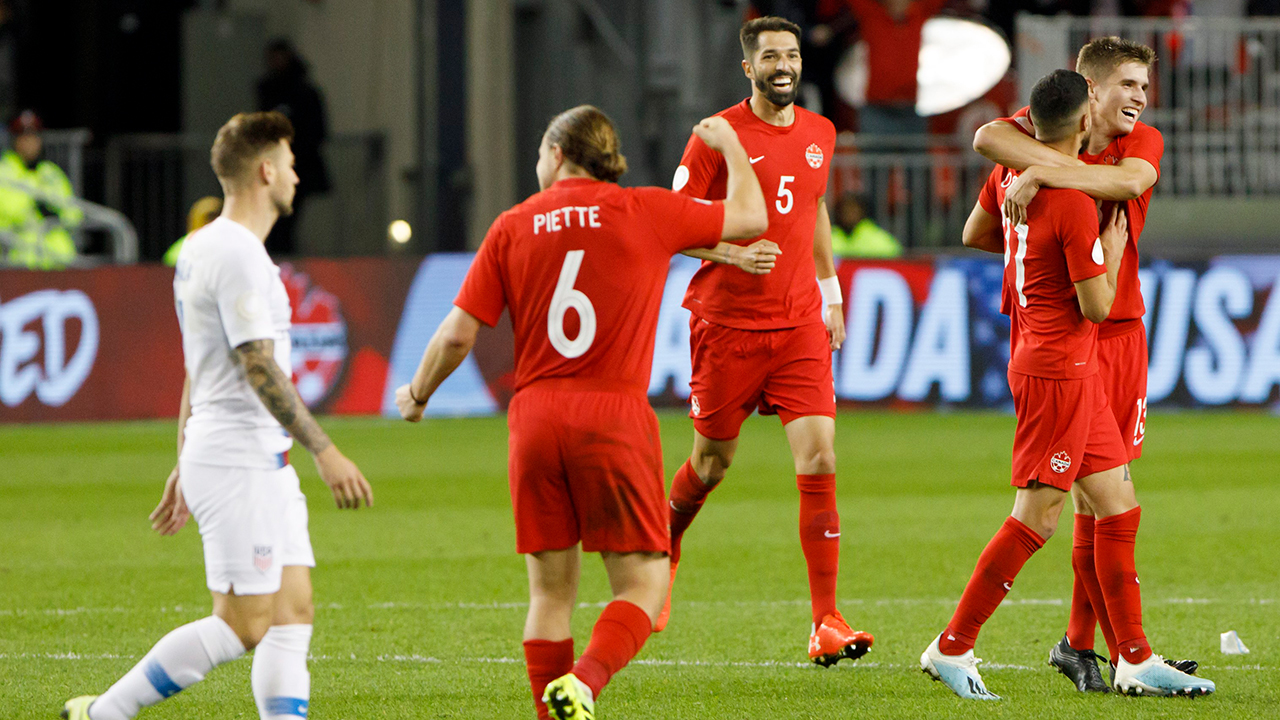The Canadian men’s national team will try to finish 2019 on a high when they face the United States in Concacaf Nations League on Friday in Orlando.
Canada only needs a point to seal top spot in Group A and book its place in the Nations League semifinals. Most importantly, a draw or win could seal a spot in the hexagonal phase of Concacaf World Cup qualifying.
Considering who is missing for the U.S., Canada has a strong chance of repeating its heroics from October. However, it’ll take another 90 minutes of mental focus and near-perfect tactical execution, just like the win at BMO Field.
With that in mind, here’s how both teams could set up.
How Canada could line up
Derek Cornelius, Kamal Miller and Samuel Piette all started against the U.S. last month but have not played a competitive match since. Mark-Anthony Kaye logged about 45 minutes in LAFC’s loss to the Seattle Sounders on Oct. 29, while centre-back Doneil Henry has been inactive as well.
“We’ve worked behind the scenes with the MLS clubs, our sports scientists,” said head coach John Herdman when asked about players who are lacking match fitness. “Dr. Cesar Meylan has been working with some individuals closely on the grass with them to ensure their physical status and that they have been engaging in some matches with semi-pro university teams.”
Herdman, as expected, kept his cards close to his chest about his team selection, but here is a stab at a potential 11.
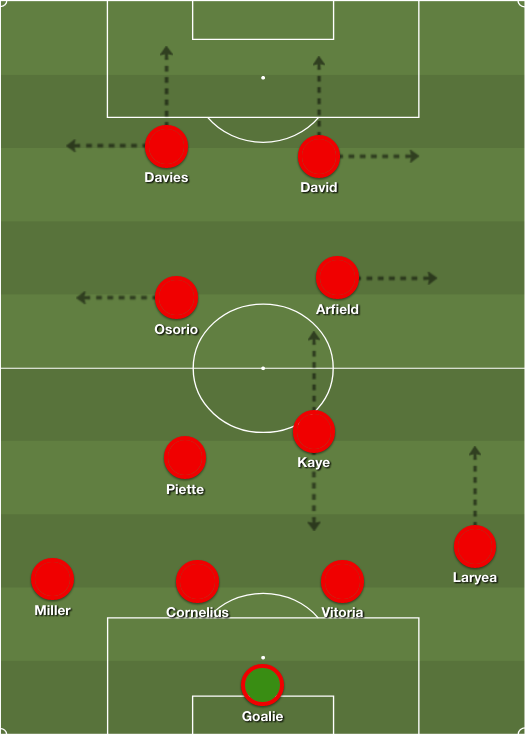
Keeping an unchanged lineup from the first matchup in October allows Herdman to switch tactics throughout the game. Canada would have numerical advantages across the pitch with the more conservative Miller at left-back, Piette in the heart of the midfield and Kaye’s ability to cover ground. Jonathan Osorio and Scott Arfield also like drifting to their respective flanks when necessary, further protecting the wings if the U.S. has possession.
“[This squad] gives us options to bunker down and play a deep block like we did against Mexico at the Gold Cup or it gives us the options to get on the front foot like we did at home,” Herdman said.
A back five might even be in play here, as was seen at the Gold Cup against Mexico. Either way, Herdman has the tactical flexibility.
How the U.S. could line up
Christian Pulisic, Michael Bradley and Zack Steffen are injured, so there will be some changes to the U.S. lineup.
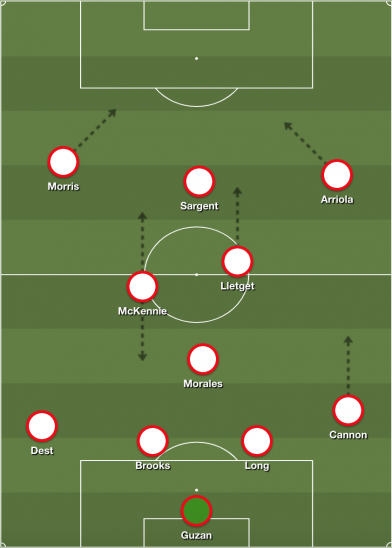
Ajax full-back Sergino Dest should become cap-tied to the Americans following his commitment to the team. However, he can be exploited when deployed as an inverted left-back. More on that later.
Cristian Roldan started the MLS Cup final on Sunday so he could be rested in favour of a more creative midfielder in Sebastian Lletget. Alfredo Morales has more match fitness compared to Wil Trapp, so coach Gregg Berhalter may go for Morales here.
Up front, Jordan Morris has a chance to move to the left wing with Paul Arriola starting on the right.
Will Canada mirror their tactics from October?
Some tactical tweaks should be expected at the very least, especially in the humidity of Orlando. It’s much easier to press with that level of intensity in the milder conditions of Toronto in October. Plus, there will be some players who will be participating in their first competitive match since that historic night at BMO Field. Managing their fitness levels will be vital.
Canada has defended in a 4-4-2 in recent games. This was the case against the U.S. last month.
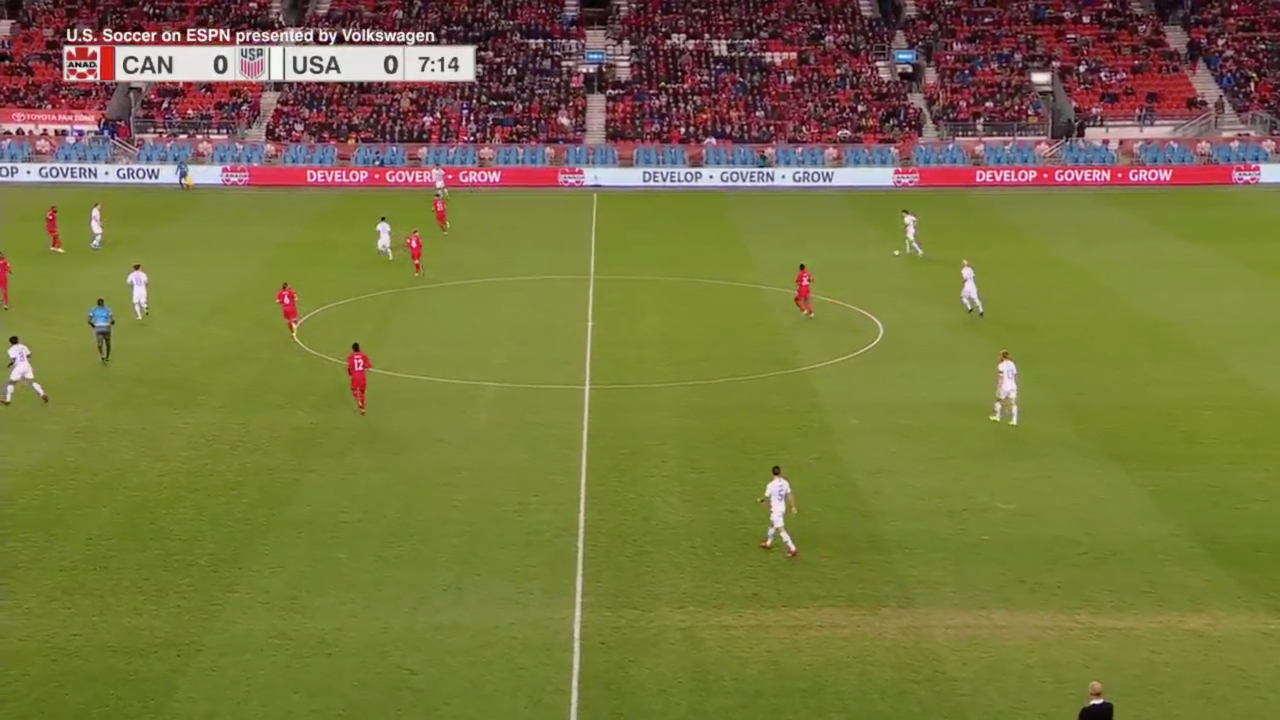
It’s important that Canada’s defensive shape is compact. There were occasions last month when the U.S. bypassed the Canadian midfield and progressed the ball into Zone 14. Canada didn’t concede a dangerous chance but they may not be so lucky in Orlando.
This occurred in the first half at BMO Field whenever Samuel Piette and Liam Fraser both pushed up at the same time.
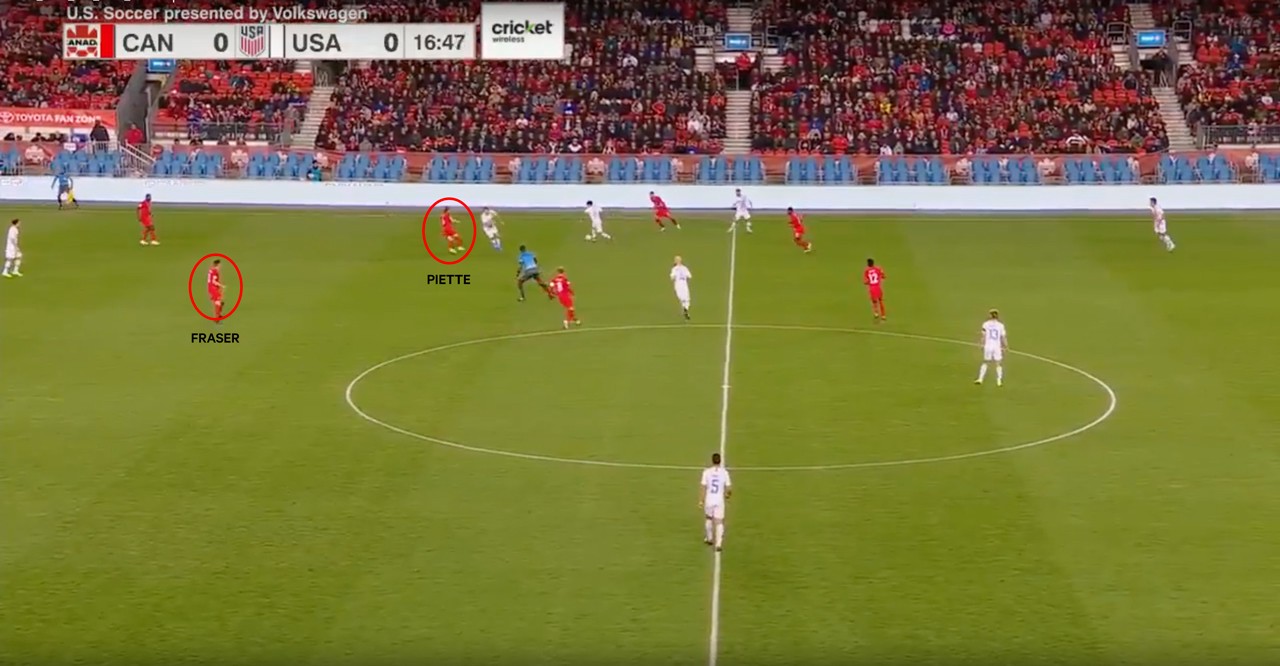
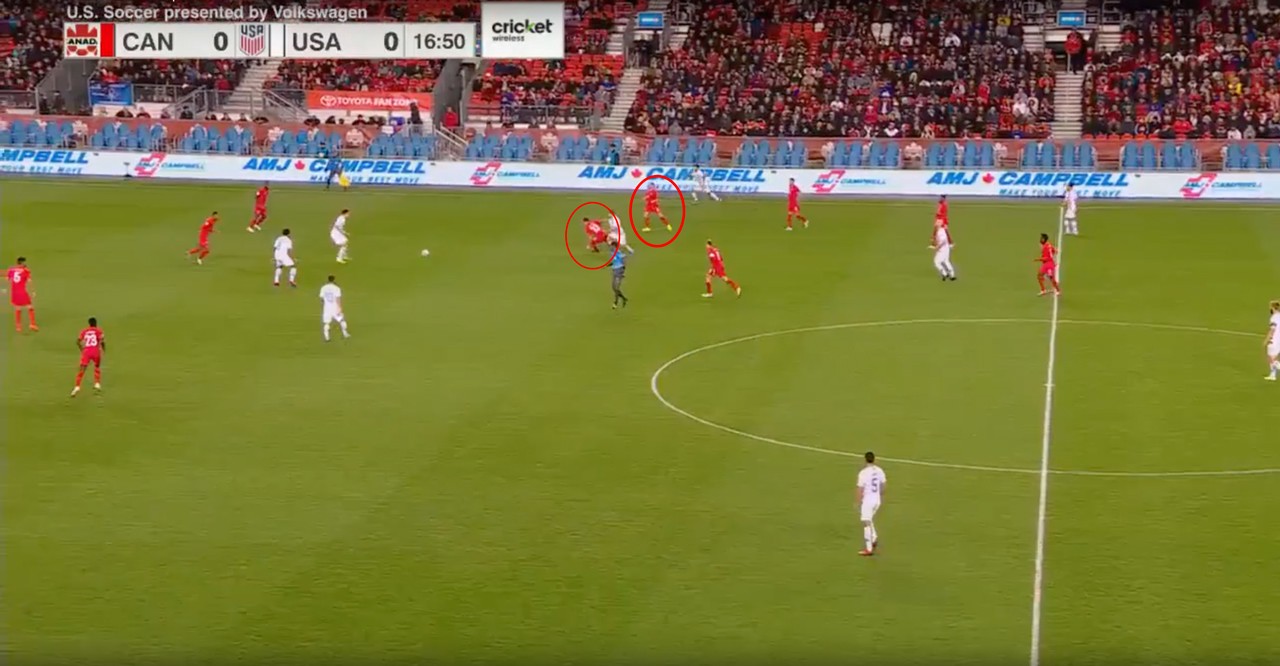
Fraser replaced the injured Kaye and the latter will probably start on Friday. This may not be an issue with Kaye on the pitch. Still, Piette tends to roam from his position in order to recover possession. Canada can’t get dragged around if it wants to keep the U.S. at bay.
Even though the high press might not be as heavily utilized, there will surely be moments when Canada ramps up the intensity, like during American goal kicks or when the U.S. sticks to one side of the pitch when it has possession.
This was a theme in October and it should continue on Friday.

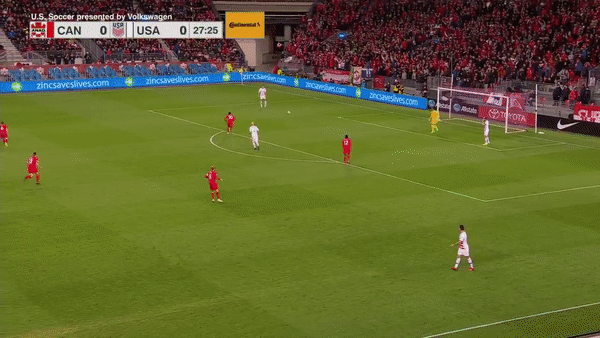
As for Canada’s attack, it has to favour the right flank. Sergino Dest is naturally a right-back but is practically guaranteed to play on the left against the Canadians. Dest is strong going forward, but he’s a liability when he defends one-on-one.


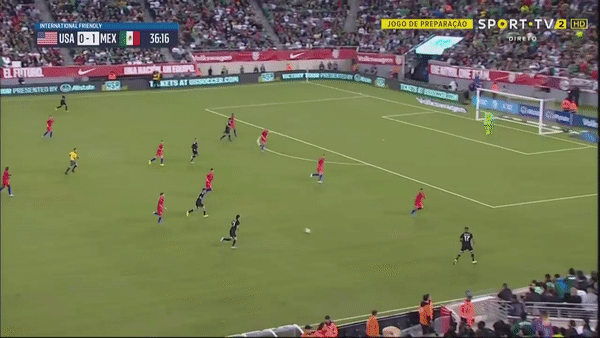
There is a reason why Mexico targeted the USA’s left side – it’s because El Tri continually benefitted from isolating Dest.
How will the U.S. adjust?
The U.S. was very static for the majority of October’s game. There was very little off-the-ball movement, so within a few passes, the Americans lost possession. Canada was the polar opposite and that is why they created high-quality chances, according to expected goals (xG) metrics.
Let’s see if the expected goals look as bad as the game on the field…
Canada: 2.22 xG on 9 shots
USMNT: 0.77 xG on 7 shots
Yup.
— Paul Carr (@PaulCarr) October 16, 2019
This meant the attack was ineffective, especially striker Josh Sargent. He only received two passes in the Canadian box in October so that has to change.

There are two tweaks Berhalter can make. The first is having the right-back – perhaps Reggie Cannon – test Canada’s left-back (Miller?) more often. Miller is more conservatively positioned so that wing will be open for the U.S. to attack.
The other change could involve the U.S. forwards pressing Canada goalkeeper Milan Borjan and his defenders. They have to be wary of the counter, but the odd time an American rushed Canada’s defence, it was discomforted.
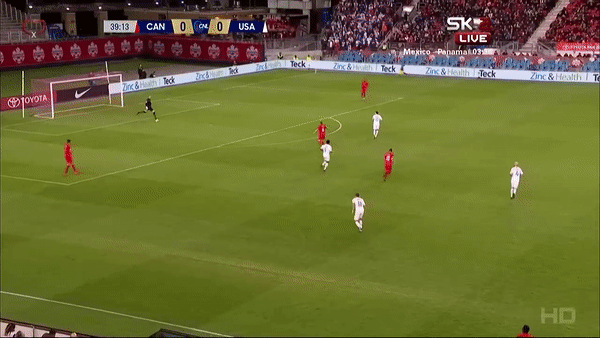

Canada might play more direct anyways but Borjan and the defenders can’t afford to hesitate on the ball in this game.
[relatedlinks]
